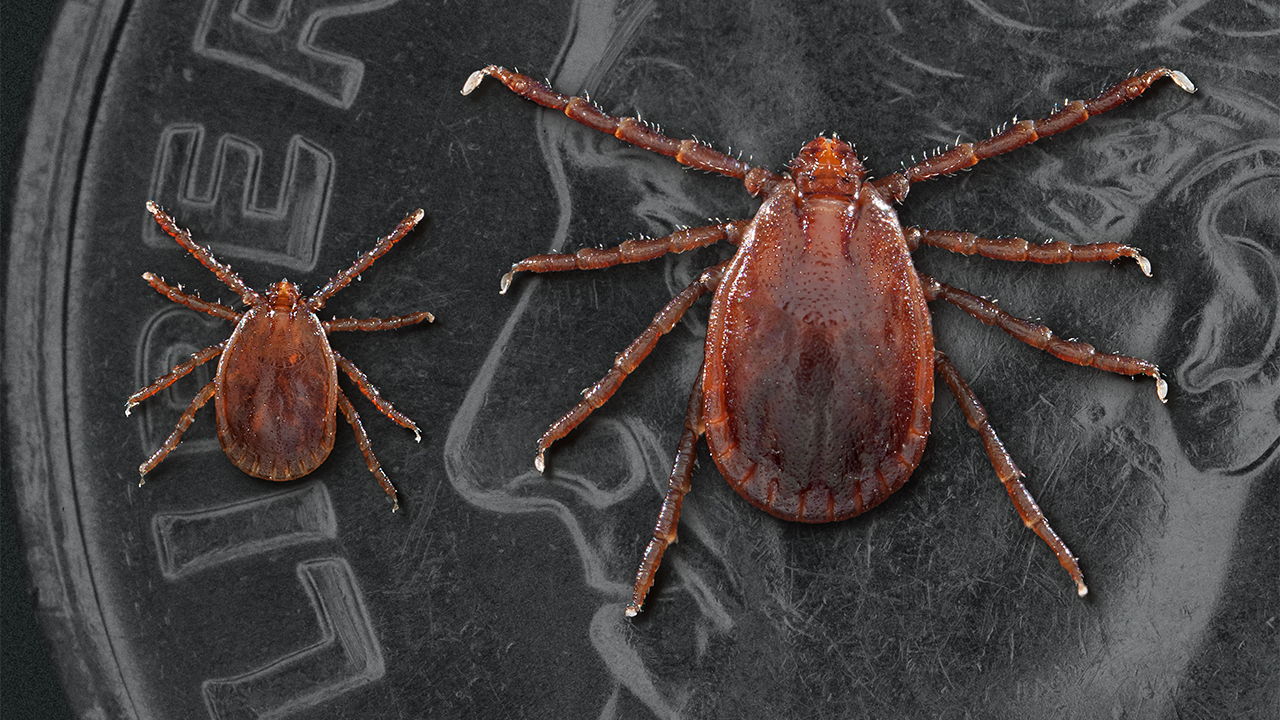News today of another stunning triumph for Creationism's malevolent designer!
The Asian longhorned tick, Haemaphysalis longicornis is spreading fast in the USA. Worldwide is causes millions of dollars in lost revenue for cattle farmers. It was first reported in New Jersey in 2017 and has now spread to Missouri. The tick is responsible for spreading the organisms that cause bovine theileriosis, which is similar to anaplasmosis in that it causes weight loss, reduced milk yield and death in cattle. The longhorned tick is closely related to other ticks in the Haemaphysalis genus which are found extensively in Asia and Australasia, all of which can and do transmit bacterial and viral diseases.
I described in The Malevolent Designer: Why Nature's God is not Good how another tick, the black-legged tick, Ixodes scapularis transmits the disease anaplasmosis in humans by injecting the rickettsia bacterium, Anaplasma phagocytophilum when it bites.

- Climate change, meaning the warmer temperatures in the US mid-west are creating a more conducive environment for it.
- the fact that females can breed parthenogenically, meaning they don't need to mate to produce thousands of fertile eggs - all of which are female with the same ability. This mean in a few years, a single female can quickly establish a very large population.
The University of Missouri news release explains the problem and how it was discovered:
The Longhorned tick causes the loss of millions of dollars in agricultural revenue to cattle producers worldwide, and it is now in northern Missouri.Just another in a very long list of vectors that, if you accept what Creationists claim for the sake of argument, are deliberately designed to transmit the disease-causing organisms it also designed, when they take a blood meal from a suitable vertebrate - usually a mammal but this can include birds and reptiles - so increasing the suffering in the world.
Originally found in eastern Russia and the Australasian region, this tick was first found in the United States in 2017 in New Jersey. It has since reached the Mid-Atlantic, New England and Midwestern regions of the U.S., and now has been discovered in northern Missouri for the first time by researchers at the University of Missouri.
Last year, the Longhorned tick was found in the southern part of the state. This latest discovery indicates an additional economic burden to cattle producers due to ticks; as the Longhorned tick infestation could lead to significant loss in weight gain for cattle, similar to an already widely prevalent disease called anaplasmosis; but so far, the threat from this species of tick to cattle — and people and their pets — in Missouri remains low. However, researchers emphasize that the discovery of the Longhorned tick in the state increases the need for more vigilance towards ticks in general.
While most ticks reproduce traditionally, female Longhorned ticks can lay thousands of eggs without the help of a male, which makes it easier for them to quickly establish in new areas. Infestation of the Longhorned tick can lead to possible transmission of bovine theileriosis, a disease that kills red blood cells in cattle.
While there have currently not been any confirmed cases of bovine theileriosis in Missouri cattle, this discovery further heightens the need for Missouri cattle ranchers to make informed decisions regarding quarantining protocols when introducing new cattle into their herds in an effort to protect the health of their livestock, which has significant economic implications.
Rosalie Ierardi recently discovered two Longhorned ticks in Linn County, Missouri, while conducting anaplasmosis surveillance research.Studying the prevalence of invasive ticks in different geographical regions can help veterinarians and farmers take proactive, preventative steps that may ultimately protect the health of livestock, which has huge economic implications.
Rosalie Ierardi, Anatomic pathologist
College of Veterinary Medicine
University of Missouri, Columbia, MO, USA.
Ierardi collaborated on the project with Ram Raghavan, a professor in the MU College of Veterinary Medicine and MU School of Health Professions. Raghavan, who has been tracking the spread of various species of ticks in the U.S. for 15 years, predicted the potential geographic distribution of the Longhorned tick back in 2019. So far, the tick appears to be establishing in the areas that he had predicted in that study. He said there not only appears to be an increase in the abundance of all ticks in the Midwest in the past decade, but also an increase in the pathogens and diseases they transmit to cattle, humans and pets.While most ticks reproduce traditionally, female Longhorned ticks can lay thousands of eggs without the help of a male, which makes it easier for them to quickly establish in new areas.
Warmer temperatures in the Midwest seem to be creating perfect conditions for ticks and the pathogens they carry to thrive, and this problem may get worse going forward as the planet continues to warm, which is concerning. We must be vigilant and devote resources toward trying to prevent these ticks from spreading diseases that harm the health of cattle, humans and their pets. The discovery of Longhorned ticks in northern Missouri greatly increases the need for more vigilance towards ticks in general and the need for routine monitoring of the pathogens they transmit.
Professor Ram Raghavan
College of Veterinary Medicine and School of Health Professions
Missouri University, Columbia, MO, USA.




No comments :
Post a Comment
Obscene, threatening or obnoxious messages, preaching, abuse and spam will be removed, as will anything by known Internet trolls and stalkers, by known sock-puppet accounts and anything not connected with the post,
A claim made without evidence can be dismissed without evidence. Remember: your opinion is not an established fact unless corroborated.